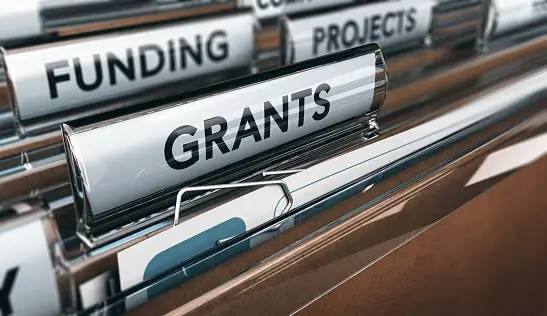How to Find Grant Opportunities for Nonprofits: A Comprehensive Guide.
Nonprofit organizations play a crucial role in addressing various social, cultural, and environmental challenges.
However, finding sustainable funding sources can be a challenge in itself. One of the primary sources of funding for nonprofits is grants.
This comprehensive guide aims to help you find grant opportunities for your nonprofit organization by focusing on practical steps.
-
Understanding Grants and Nonprofit Fundraising
Before diving into the grant search, it’s essential to understand the basics of grants and nonprofit fundraising.
Grants are funds provided by government agencies, foundations, or other organizations, usually to support specific projects or initiatives. Unlike loans, grants do not need to be repaid, making them an attractive funding source for nonprofit organizations.
-
Start with a Solid Grant Research Strategy
To find relevant grant opportunities, begin by developing a thorough grant research strategy. This involves:
a. Identifying your nonprofit’s funding needs: Determine the projects and initiatives that require funding and develop a clear understanding of your organization’s mission and objectives.
b. Creating a prospect list: Compile a list of potential funders, including government agencies, foundations, and corporations, based on your organization’s focus and funding needs.
c. Setting up grant alerts: Subscribe to grant databases and newsletters to receive notifications about new grant opportunities in your sector.
-
Utilize Online Grant Databases and Resources
Various online databases and resources can help you find grant opportunities for your nonprofit. Some popular options include:
a. Grants.gov: This is the largest database of federal grants in the United States. By registering on Grants.gov, you can search, apply, and track grant opportunities across various federal agencies.
b. Foundation Directory Online (FDO): The FDO is a comprehensive database of grantmakers, including private foundations, corporate giving programs, and grantmaking public charities.
c. Guidestar: Guidestar is a leading platform that provides information on various nonprofit organizations, including their financial data, impact, and grant opportunities.
d. Local and regional grant databases: Many states and cities offer localized grant databases to help nonprofits find funding opportunities in their specific region.
-
Network and Build Relationships
Building relationships with potential funders can significantly increase your chances of securing grants.
Here are some tips for effective networking:
a. Attend conferences, workshops, and seminars related to your nonprofit’s sector to meet potential funders and learn about grant opportunities.
b. Reach out to other nonprofits in your sector and ask for referrals to potential funders.
c. Collaborate with other organizations to apply for joint grants, which can strengthen your proposal and attract larger funding amounts.
-
Leverage Social Media Platforms
Social media platforms can be an excellent resource for discovering grant opportunities and connecting with funders. Some useful strategies include:
a. Following grantmakers, foundations, and government agencies on social media platforms such as Twitter, Facebook, and LinkedIn.
b. Joining relevant groups and forums on Facebook and LinkedIn to share information about grant opportunities and learn from other nonprofits.
c. Using social media monitoring tools like Hootsuite or Mention to track grant-related keywords and conversations.
-
Prepare a Compelling Grant Proposal
Once you have identified potential grant opportunities, it’s time to prepare a compelling grant proposal that stands out from the competition.
Here are some essential elements to include in your proposal:
a. Executive Summary: Provide a clear and concise overview of your nonprofit, its mission, the project for which you’re seeking funding, and the expected impact.
b. Organizational Background: Describe your nonprofit’s history, achievements, and credibility to demonstrate your capacity to manage the grant funds effectively.
c. Project Description: Detail the project’s objectives, activities, timeline, and deliverables, ensuring they align with the funder’s priorities.
d. Budget: Create a detailed and transparent budget that outlines how the grant funds will be used and the expected costs associated with the project.
e. Evaluation and Sustainability: Explain how you will measure the project’s success, evaluate its impact, and ensure its long-term sustainability.
-
Stay Organized and Track Your Progress
Managing multiple grant applications can be overwhelming, so it’s essential to stay organized and track your progress. Consider the following tips:
a. Create a grant calendar to keep track of deadlines and submission dates.
b. Use project management tools, like Trello or Asana, to manage your grant applications and collaborate with team members.
c. Document your grant application process, including submitted proposals, feedback received, and lessons learned, to refine your approach over time.
-
Don’t Overlook Smaller Grants and Local Opportunities
While it may be tempting to focus on large grants, smaller grants can be equally valuable for your nonprofit.
Smaller grants may have less competition and can be an excellent opportunity to build relationships with funders.
Additionally, local grant opportunities may have more relevance to your organization’s mission and be more aligned with your community’s needs.
Conclusion
Finding grant opportunities for your nonprofit organization can be a challenging process, but with the right strategy, tools, and resources, you can increase your chances of securing funding.
By following the steps outlined in this comprehensive guide, you will be well-equipped to find and apply for grants that align with your nonprofit’s mission and objectives.
Remember to focus on building relationships with potential funders, utilizing online resources and social media, and crafting compelling grant proposals to maximize your success in securing grants for your nonprofit.






